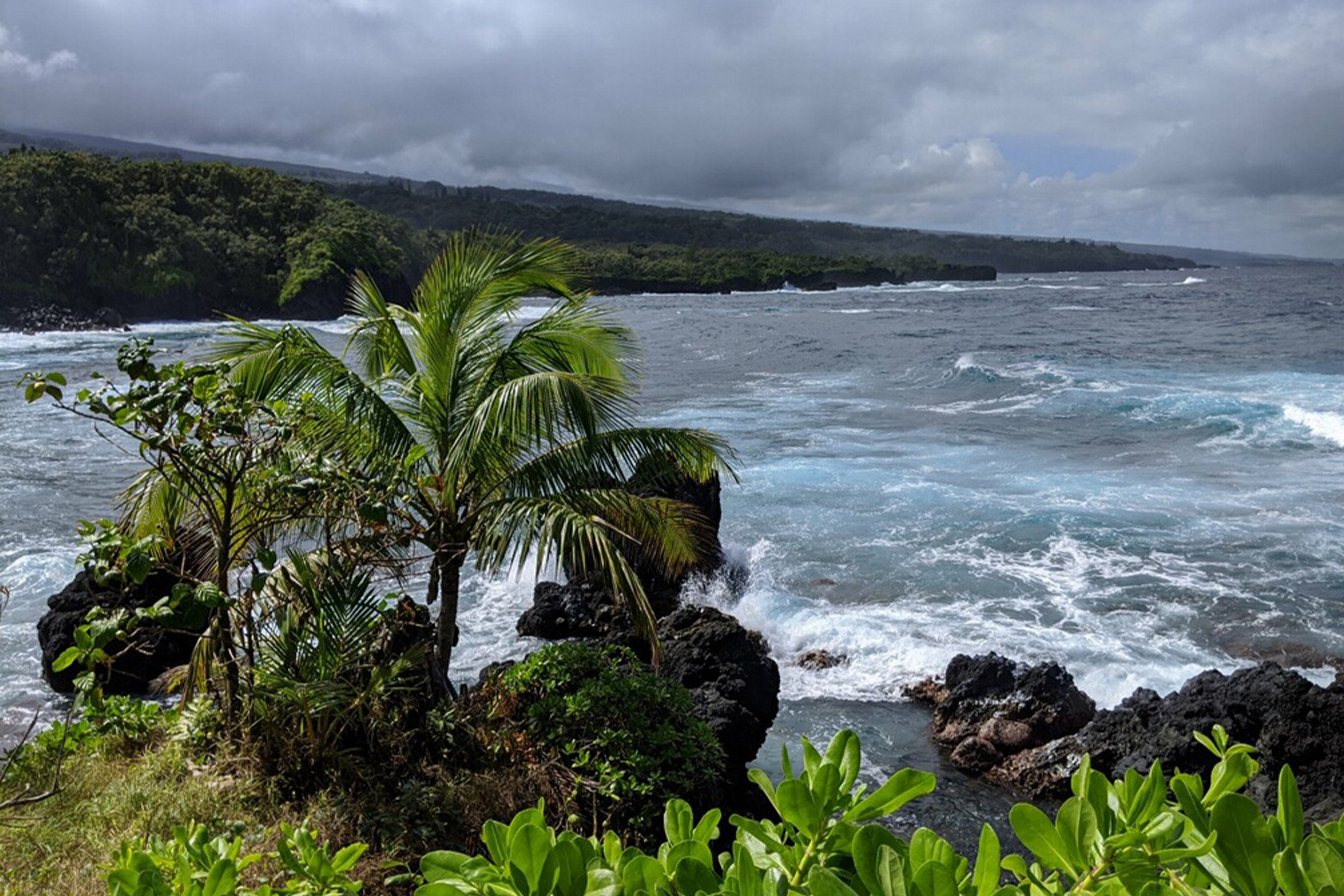Blog

Learning Togetherness in Hana
As part of the three-year planning and design process behind our upcoming Tropical Forest exhibit, Julianna Razryadov and Adam Haas are traveling to Hawaii to study first-hand the region’s biodiversity hotspots, natural resources and culture. Follow their adventures!
Hana is an awe-inspiring place. The steep cliffs with turquoise water crashing against them, the black sand beaches, the dense rainforest. There is an air of mystery and wholeness within the landscape — it will whisper its secrets only if you honor it and listen closely, carefully.
Kahanu Garden is one of the four National Tropical Botanical Gardens. It focuses on ethnobotany, the cultivation of plants for human use. It is known for its ‘ulu, or breadfruit, collection which includes over 150 varieties from all over the Polynesian islands. This ethnobotanical collection has meant a lot to many different people, as it is a goal for Kahanu to help feed the people of Polynesia with the crops that work on their land. A single mature breadfruit tree can produce over 500 fruit, each weighing up to 8 lbs. Kahanu Garden distributes cuttings, saplings, and seed throughout, giving the appropriate cultivar for the place it is requested for.
This is not the only collection at Kahanu. Their first collection was that of coconuts, which are being lost on the islands as a result of a phytophthora fungus. This collection is giving information on which varieties are more resistant and can speak to the future of coconut growing across Polynesia. One of their most important collection is that of bananas. Hawaiians used to grow over 40 varieties, but are now down to only a handful. Bananas are extremely important not just as a food source but as a cultural crop here. And there are so many amazing forms of this plant! One we were shown gives birth to a fruit cluster from within its stalk. The stalk starts to swell, as if the plant is pregnant, and one can then cut a slit into that stalk and… out comes a fruiting cluster of bananas!

The stories we were told by our guides, the rapid-fire Peter Gaffney and the excited Auntie Ipo, were of the careful attention paid to the land which instructed people of what to do and when. You do not fish the Manini fish until the similarly striped Manini banana fruit is ripe. You do not fish squid until you see the red flowers of a particular tree. In this way the people not only kept track of abundance in the waters, they also self-limited their extraction of resources. The plants, both native and introduced by Polynesians were all carefully watched. Stories evolved from the connections of what was happening when those plants had different stages. The Makahiki season, a season of rest when you cannot work the land and when people play games and prepare their warriors, is marked by the appearance of the tassels on the kō, or sugarcane. When the tassels decline, the season is over.
The Hawaiian stories are of careful cultivation, of labor, and use, but primarily of togetherness. Nothing can be done alone. You need community to build your hale, or hut, and you need community to work the kappa, or clothe, inside that hut. A’ohe hana nui I ke alu ia. No task is too great when done together.
We concluded the tour with a coconut that Peter kindly cut open for us. Overwhelmed by the emotion from the garden, we were nourished by the juice of a young coconut. The land whispers — we need only to stop and listen.
Select photos © Julianna Razryadov and Paul g. Wiegman

